ELLIPAL Titan vs. NGRAVE ZERO: Hardware Wallets Compared!




Choosing the right hardware wallet for your unique and personal needs is no easy task. With so many great wallets out there, it is hard to know which one would be best suited for you.
Some wallets have different strengths and weaknesses in certain areas, and unfortunately, many crypto hodlers find this out the hard way after making the investment and purchasing a wallet, only to find out it can’t quite stand up to the task.
That is why here at the Coin Bureau, we do in-depth research and offer guides on many of the leading hardware wallets to help users find the one that is best for them. In addition to this ELLIPAL Titan vs. NGRAVE ZERO Hardware Wallet Review, you may also find the following articles useful:
- NGRAVE In-Depth Review and Analysis
- ELLIPAL Titan In-Depth Review and Analysis
- ELLIPAL Titan Mini Review
Additionally, if you are looking beyond these two wallets, you can also find our top picks for the Most Secure Hardware Wallets and learn How Hardware Wallets Work.
Now, without further ado, let's crack on!
What are Hardware Wallets?
When it comes to safeguarding your cryptocurrency, nothing beats the security and peace of mind provided by hardware wallets. Hardware wallets are simple, purpose-built devices designed to keep your crypto safe from the ever-present threats lurking in the digital realm.
The main risks that look to compromise the security of cryptocurrency storage methods are:
- Remote Hacks
- Viruses and Malware that can affect computer security and smartphones, exposing private crypto storage data
- Phishing attacks
The above three methods all have one thing in common, they are digital attack vectors. When you use a software wallet, such as those found on computers and smartphones, there is a chance that malicious actors can find a way into your device using the methods outlined above. We have a dedicated article on Ransomware and Cybercrime Risks if you would like more detail on cyber threats that crypto users should be aware of.
However, it wouldn't be fair if I didn't also mention the risks of hardware wallets. While the primary threats of software wallets are malicious external forces, the primary risks of hardware wallets are user errors such as:
- Not backing up your device adequately
- Losing the recovery phrase
Note that the above risks also often apply to most software wallets.
Hardware wallets are physical devices that store your private keys offline, often resembling USB sticks or smartphones (without online connectivity). These private keys are what give you access to the blockchain network where your assets are held. Private keys are what you need to access and control your cryptocurrency holdings, anyone who accesses these keys can access your crypto. By keeping these keys offline, hardware wallets create an impregnable barrier against potential attacks.
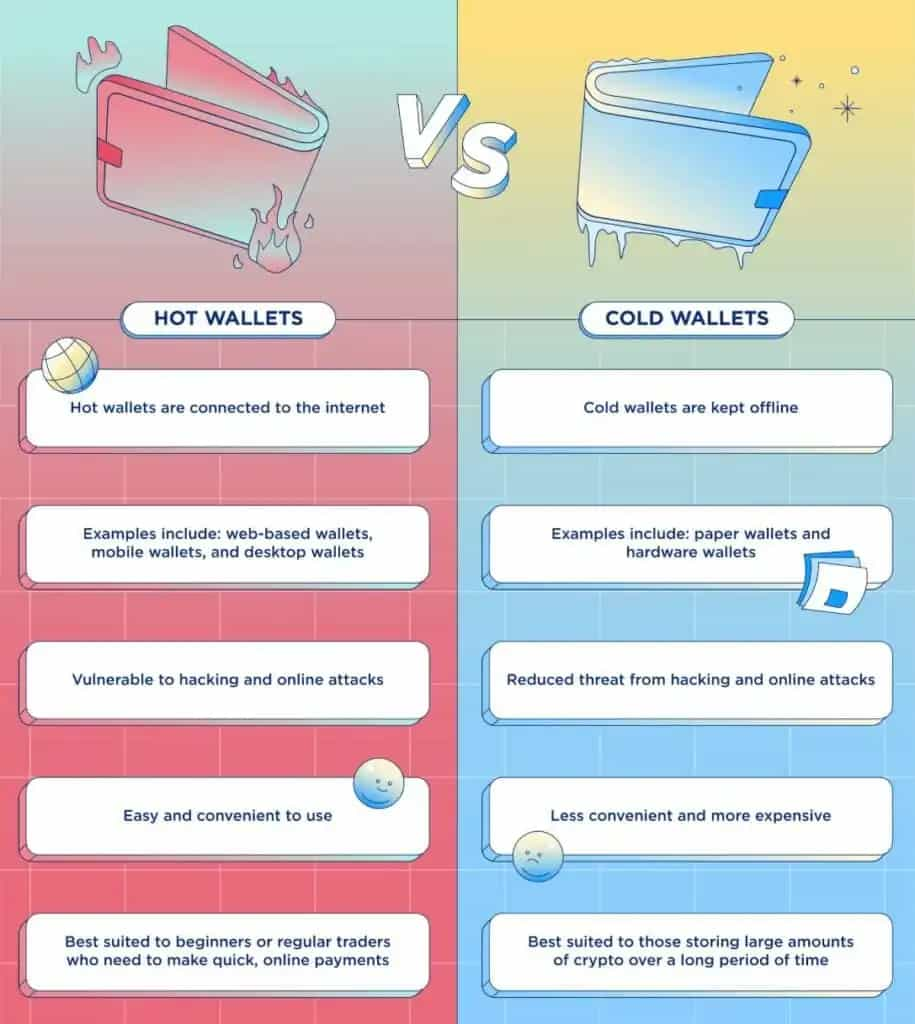
When you want to access your funds or make a transaction, you plug in the hardware wallet or use the corresponding mobile app, follow a series of secure steps, and voila! Your assets are accessible for your intended use. Adding another layer of confidence is the fact that even if your computer is compromised by malware or a hacker, your crypto remains safe through the use of a hardware wallet, untouched and untouchable.
I hope this brief overview of hardware wallets helped, if you want a deeper dive into crypto wallets, we have an article outlining the Different Types of Crypto Wallets where we compare and contrast the pros and cons of each.
Now, let's get into NGRAVE ZERO vs. ELLIPAL Titan.
NGRAVE Team
NGRAVE, a Belgian digital asset security provider, set out to create a product that features both robust security and user-friendliness. Their collaboration with esteemed institutions like the Interuniversity Microelectronics Centre (IMEC) and the Computer Security and Industrial Cryptography Group (COSIC) exemplifies their commitment to excellence. The NGRAVE development team worked in tandem with academic experts to craft a superior hardware wallet, unlike anything else on the market.
Ruben Merre, the CEO and Co-Founder embarked on his entrepreneurial journey at the astonishing age of 8, kickstarting a business. Ruben's accolades include being named in Belgium's 40 under 40, studying at the University of Oxford for the Oxford Blockchain Strategy Programme, and holding a Project Management Professional certification.
Xavier Hendrickx, the CTO and Co-Founder, transitioned from formal computer science studies to intensive self-learning. His involvement in crypto dates back to 2013, with experiences encompassing the Mt. Gox hack and his CTO role at Swarm City. Xavier's fervour for crypto security and blockchain applications led him to co-found NGRAVE.
Edouard Vanham, the COO and Co-Founder, brings a wealth of IT and business sector experience. His mastery lies in backend solutions and business operations, amplified by his Master of Business Engineering, fitting him seamlessly into his role as Chief Operations Officer.

As if that isn't impressive enough, here is where things get really interesting:
Addressing initial concerns about cryptographic and cybersecurity expertise, NGRAVE accomplished an impressive feat – securing the guidance of Jean-Jacques Quisquater, a cryptographic luminary with over 50 years of experience. Jean-Jacques' contributions to the field of cryptography have been significant, as one of the true pioneers in this field, Quisquarter was even cited as the second reference in Satoshi's 2009 Bitcoin whitepaper. Collaboration with luminaries like Jean-Jacques, in conjunction with IMEC and COSIC, positions NGRAVE's hardware wallet, the ZERO, as an unrivalled pinnacle of security.
NGRAVE Product Suite
Alright, let’s get into what products NGRAVE offers. We’ll start with their hardware wallet
NGRAVE ZERO
At the core of what NGRAVE offers is the NGRAVE ZERO hardware wallet. This wallet functions quite differently from the early industry standard set by the likes of Ledger and Trezor.
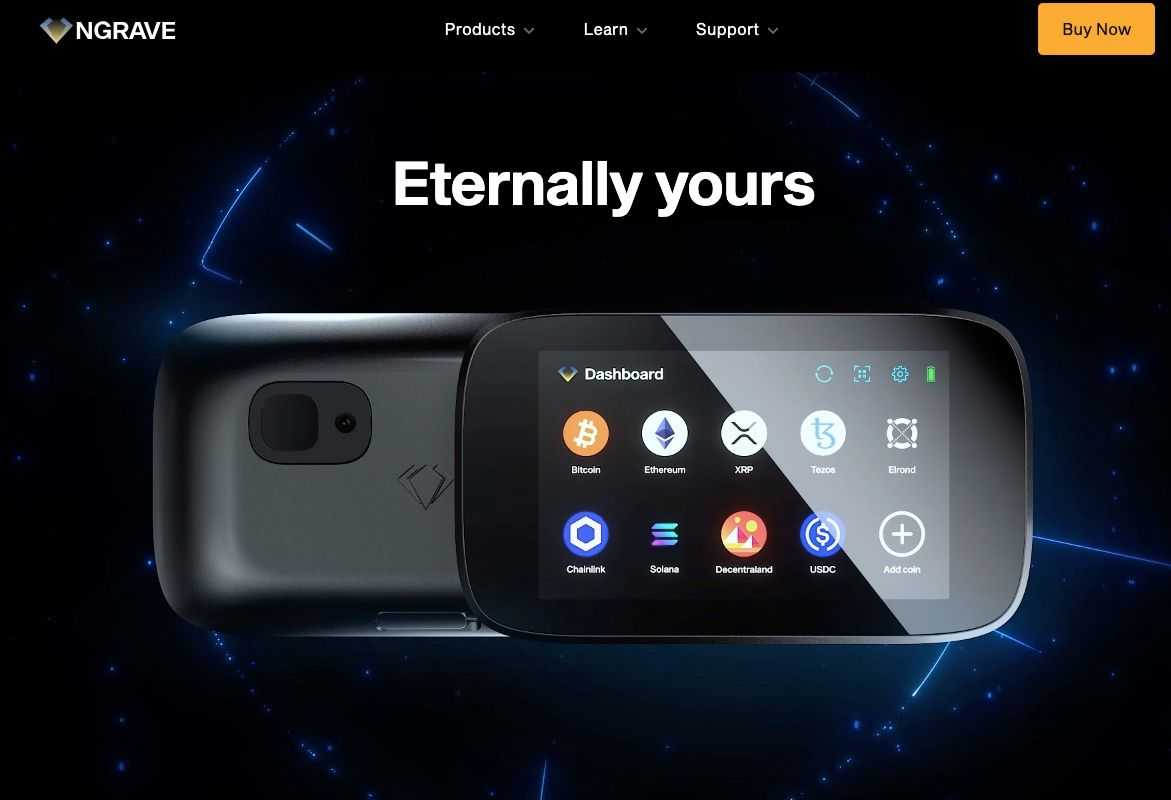
The device looks and feels more akin to a smartphone with full touchscreen functionality. The result of the design is that the NGRAVE is a 100% air-gapped wallet. I won't go into too much detail about why that is important or go in-depth about the workings of the NGRAVE as we do that in our dedicated NGRAVE review, but here are the highlights:
The ZERO is a pocket-sized touchscreen device with the following dimensions:
- Width: 124.5 mm
- Height: 72.7 mm
- Thickness: 14.5 mm
- Weight: 217 g
and showcases the following features:
- fingerprint sensor
- Built-in light sensor
- USB-C Charging Cable
- The battery is 1200 mAH
- 640 x 480 built-in camera
- LCD 600 Cd/m2 touchscreen
- On/Off button on the side of the device
- Water and dust-resistant
- Tamper-resistant due to its inner and outer casing
- The device is military-grade, premium quality and black in colour
- 4-inch colour high pixel density screen. Resolution of 480 x 800 pixels
- The ZERO is the only hardware wallet in the world that is EAL7-certified
- Comes with 2 GRAPHENE metal plates and metal punch to secure your NGRAVE Perfect Keys
- Used in conjunction with an app called NGRAVE LIQUID to securely sign, manage, and transfer assets
The device is seriously beefy, with military-grade materials and high quality that are clearly evident. I feel far more confident in its durability than I do when I am delicately handling my Trezor, which feels like it could break if I sneezed near it due to the Trezor's plastic design.
I really enjoy Trezor, don't get me wrong, but its flimsy design is always a worry. However, the NGRAVE ZERO being such a tank can also be a burden. I am someone who travels a lot and likes to take my crypto on the go for real-world use when I can, and the ZERO is not only heavy, but also large, making it lose points when it comes to portability.
But hey, just as secure bank vaults are not portable, I guess neither is the ZERO, and I treat it as such. My ZERO stays home and secures the crypto I don't intend to move, while the ELLIPAL is actually my "on the go" wallet. More on that later.
Speaking of Trezor, this is a good time to do a quick security comparison between the NGRAVE ZERO, Trezor and Ledger, and this is the core reason I left Ledger for NGRAVE. The ZERO utilizes security features that do not exist in other crypto devices.
First off, The device is the first hardware wallet in the world that is EAL7 certified, which is the highest security certification for the blockchain and financial industry. To put this into perspective, the Ledger is only EAL5 certified, and Trezor is RoHS certified, which, guess what? so is the ZERO. What this means is that the ZERO has achieved a higher security certification than both leading hardware wallet manufacturers Ledger and Trezor.
There have also been cases of sophisticated hacking techniques that have been used to break into Trezor and KeepKey devices if the hacker has physical access to the device. The NGRAVE ZERO made their product impenetrable with anti-tampering techniques that wipe internal data if a breach is detected.
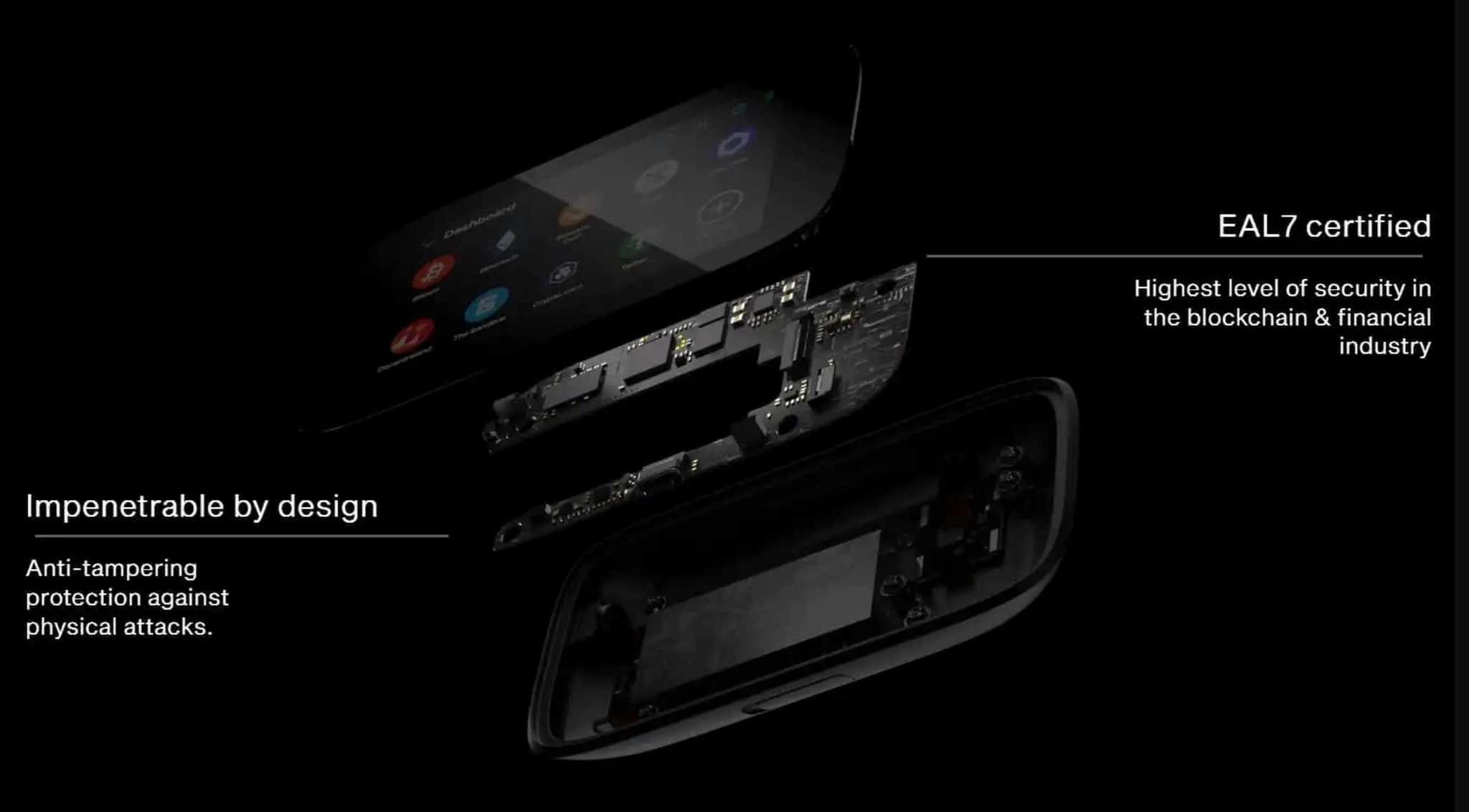
There are also state-of-the-art features like a light sensor and user input capabilities to ensure a truly random private key generation process, plus a biometric fingerprint scanner. A security concern many have with Ledger, Trezor, KeepKey, ELLIPAL, and most wallets available, is that the wallets come pre-loaded with private keys, resulting in a level of trust needed that the company hasn't stored these private keys somewhere on internal servers.
It is unlikely, but still a possible concern. Of course, there are ways to import an offline and securely generated private key that you create yourself, but that is quite an advanced technique that the average hardware wallet user likely doesn't follow.
The NGRAVE wallet does not come with a private key pre-installed. It uses a random generation technique by sensing ambient light conditions during the set-up process and allows the user to shuffle the private keys so they are only known to the user.
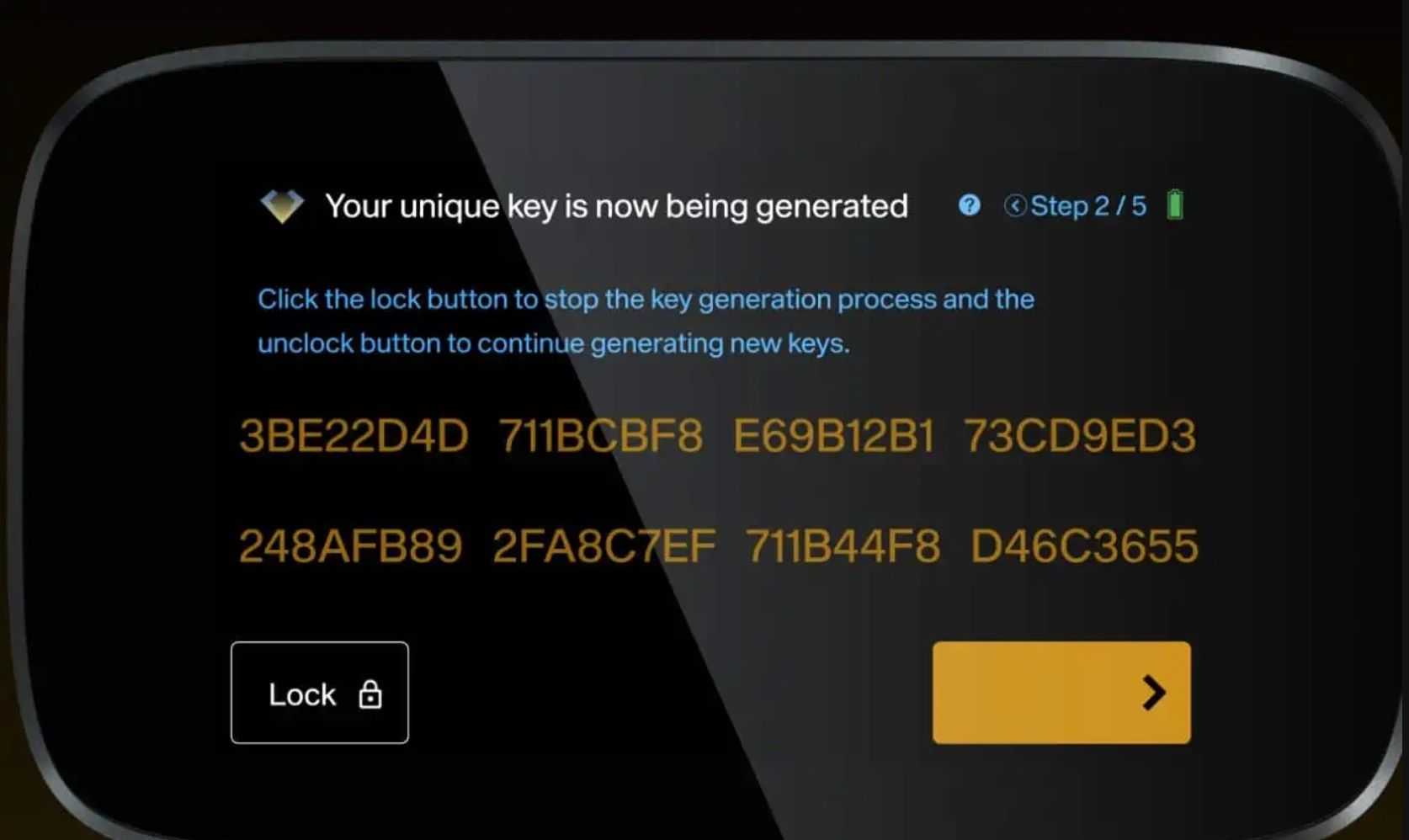
The NGRAVE and BC Vault are the only two wallets I've come across that allow for this next level of security when it comes to private key generation.
I go into more detail and provide a setup guide in our NGRAVE Review, I recommend checking it out, the device is quite impressive.
NGRAVE Perfect Key
This is another aspect that sets NGRAVE apart from the competition. Instead of using the standard 12-24 word recovery seed like most wallets, the ZERO features a recovery process that is a true breakthrough in cryptography.
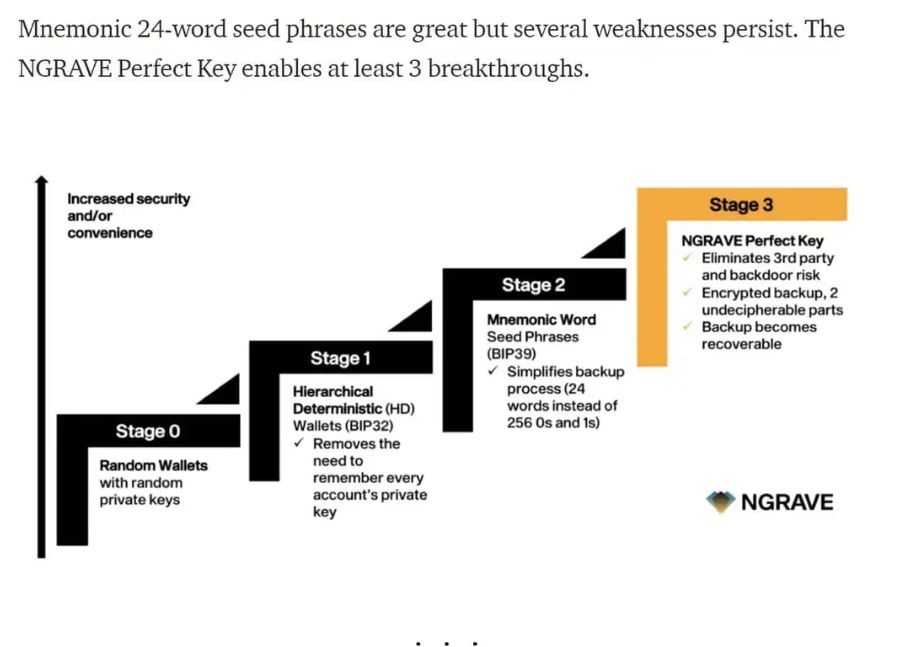
The NGRAVE Perfect Key is a 64-hexadecimal equivalent of a 24-word mnemonic phrase. Hexadecimal means that each character of the key can have one of 16 values (0-9; A-F). The total key consists of 64 characters, which together with the 16 possible values makes up a 256-bit key.
NGRAVE utilized the expertise of leading cryptography researchers to come up with this format because it allows for:
- A key generation process where user interaction is possible
- Adding a double security layer in the backup by completely splitting the key into two parts on the GRAPHENE, which will be covered later
- An ingenious recovery mechanism of the key (the GRAPHENE upper plate can be recovered without 3rd party risk)
- True randomness- it is impossible for anyone to know the recovery phrase of the device prior to when the user sets it up.
Now, for anyone wearing their cryptography hat, this may be a concern, as it was for me at first. The majority of crypto wallets use an interchangeable private key format, so, if Trezor or Ledger go out of business, no problem, you can use your recovery phrase in most other software or hardware wallets to recover your funds. NGRAVE's perfect key can only be used in NGRAVE devices, but the NGRAVE team knew this would be a deal breaker for most and offered a solution.
NGRAVE users can log into their device and back up the Perfect Key AND the 24-word traditional mnemonic recovery phrase, so you can restore the funds from your ZERO to most other wallets.
NGRAVE Graphene
The Graphene is a true innovation in private key recovery, as it marks one of the first instances where a user can recover their private key without trusting a third party. That is, assuming the user doesn't lose access to the bottom plate and their ZERO device at the same time, which shouldn't happen as they should be stored separately.
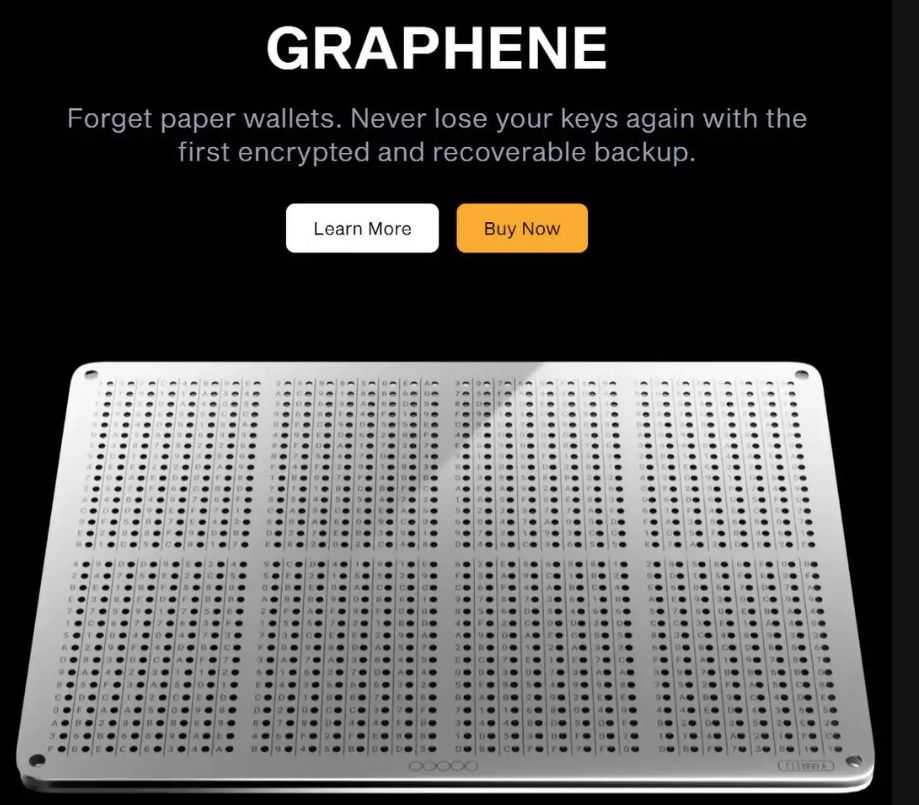
Unlike most hardware wallets that provide a recovery phrase on paper, the ZERO takes a different approach and offers two robust stainless-steel plates, each the size of A5 paper and weighing a formidable 682g (24 oz).
What sets these steel plates apart from their paper counterparts:
1. Robustness: They're immune to fire, floods, corrosion, and shocks. Basically indestructible.
2. Indecipherability: These plates only reveal the key when used together. This eliminates the risk of a single point of failure, which is present with paper methods. If someone gets hold of your paper backup, your funds are at risk. Separating the metal plates adds an extra layer of security.
3. Recoverability: A standout feature is that the ZERO offers a recovery mechanism without involving third-party trust. Each upper plate has a unique code, allowing you to order a new plate in case of loss. NGRAVE can send a matching upper plate without needing to know the alphabetical code punched into the back plate that reveals your private keys, providing secure recovery. But note that if you lose the back plate and your device at the same time, you're hooped. That is why some users also use paper backup as a backup to their backup.
The top plate features 64 columns and 16 hexadecimal possible values per column to achieve 256-bit security. The lower plate is blank, and the kit includes a metal punch for imprinting values during setup.
Now again, though this feature is great for people who are settled and have a large space for safe storage, these metal plates make the NGRAVE system not ideal for folks who are on the go. I also came across a few humourous reviews of users complaining that the metal plates don’t even fit in their home safe vaults with one user saying, “Thanks NGRAVE, now I need to buy a bigger safe.”
The metal plates are optional, mind you.
ELLIPAL Team
ELLIPAL, founded in 2018 in Hong Kong, is renowned for pioneering air-gapped hardware wallets. Their flagship ELLIPAL Wallet debuted in 2018, followed by the upgraded ELLIPAL Titan.
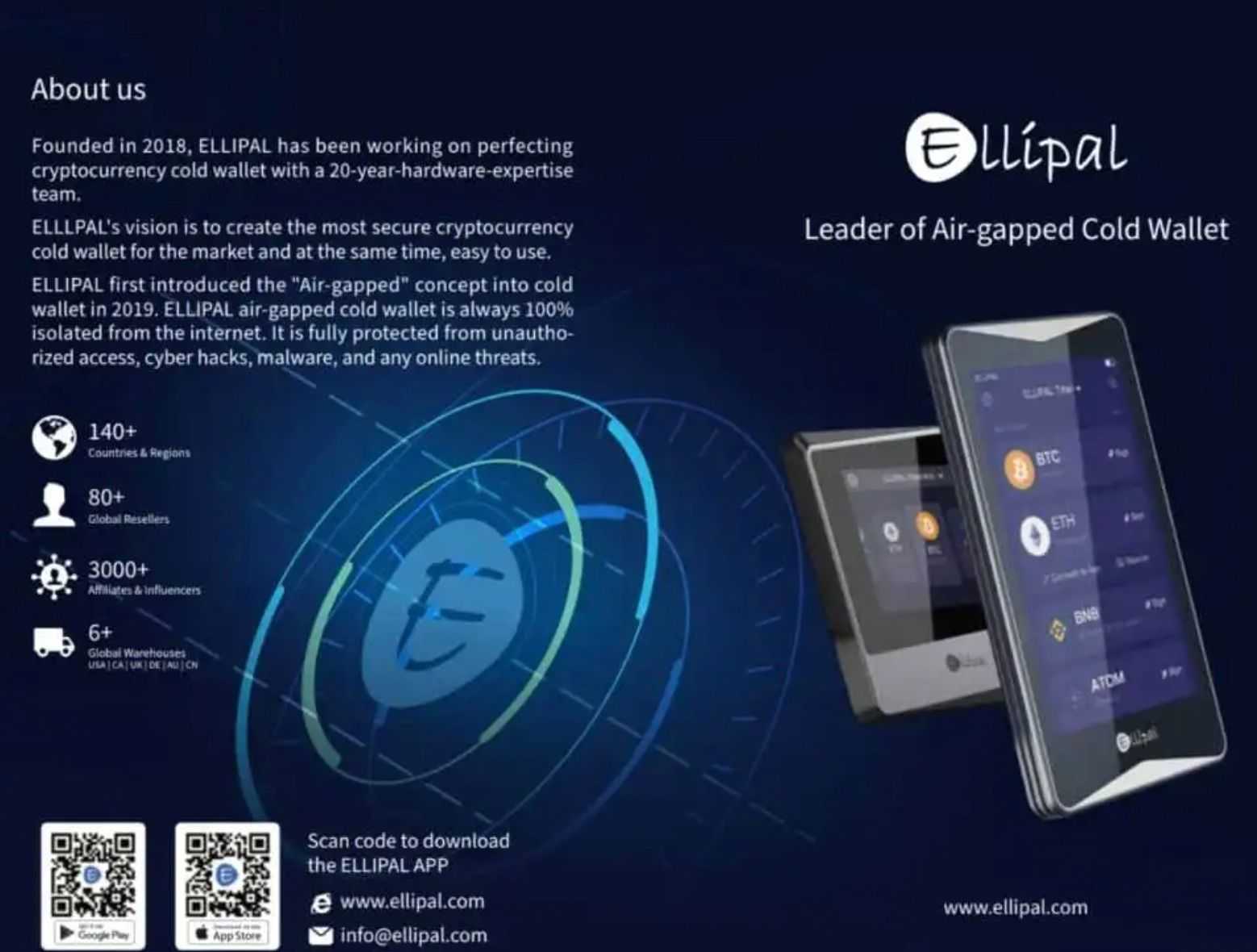
Distinguished by QR code technology, ELLIPAL ensures offline transactions, a departure from USB or Bluetooth connections. The Titan's touch screen simplifies coin management, transactions, and access to DApps via the mobile app.
With a smartphone-like design, the Titan merges familiarity and functionality. The app complements this design, while Titan's portability and QR scanner enable on-the-go crypto use.
ELLIPAL's mobile approach aligns with our dynamic lives. The app serves as a comprehensive hub for crypto tasks, while the air-gapped Titan protects private keys from online threats.
ELLLIPAL Product Suite
Now we will cover the ELLIPAL product suite, starting with their flagship product
ELLIPAL Titan
Priced at $139.00, the ELLIPAL Titan stands out as being the first hardware wallet featuring a metal case, setting a new standard for crypto wallets' durability against drops and shocks. Notably, it's virtually tamper-proof, and any attempts to break into the device will damage the internal components.
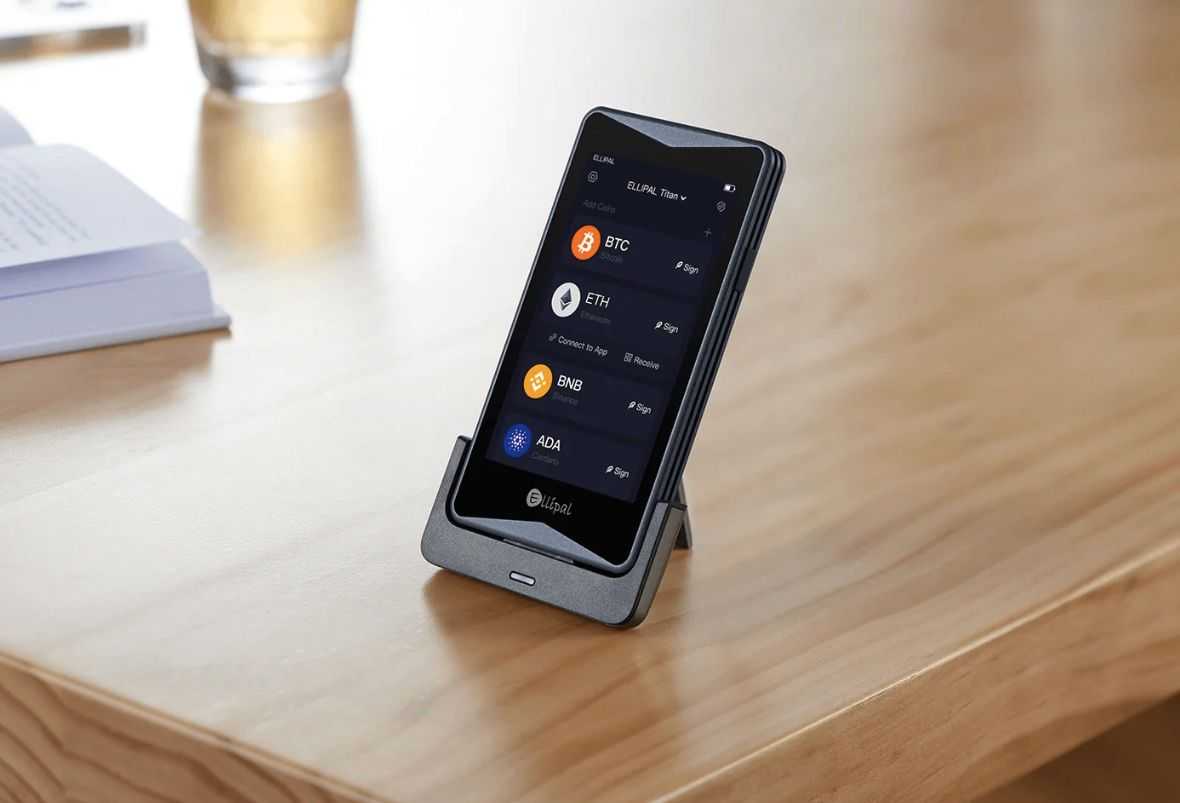
The ELLIPAL Titan provides offline cryptocurrency storage and management. It distinguishes itself from other hardware wallets by shunning traditional connectivity avenues like USB, Wi-Fi, or Bluetooth in favour of QR code-based transactions, orchestrated through the Ellipal App on your smartphone. It is this lack of connectivity and remote attack surfaces that constitutes the term "air-gapped."
Sporting a large 4-inch touchscreen, the Titan is able to feature full, clear, and detailed transaction information, enhancing accuracy and data verification. It boasts compatibility with a vast array of over 10,000 coins and tokens, including stalwarts like Bitcoin and Ethereum, as well as USDT, BNB, XRP, ADA, and more. Moreover, it extends its utility to managing NFTs and is compatible with MetaMask and various other Web3 applications.
Here is a look at the ELLIPAL Titan's specs:
- Main Features
Connector: QR Code, Air-gapped
Update: Offline (Micro SD card)
Coin Store memory: Unlimited
ELLIPAL APP: Android & iOS - Dimensions
Size: 75*71*10.5mm
Weight: 120g
Material: Fully metal sealed
Camera: 5M AF
LCD: 4 inches HD
Battery: 1400 mAh
Standby Time: 259 hours
Storage temperature: -20°C to 70°C - Box Contents:
Titan Hardware Wallet
Type-C Charging Cord
Security Adapter
User Menu
Seed Phrase Recovery Sheets
SD Card
One of the aspects that I found most impressive with the ELLIPAL lineup of wallets is their functionality and connectivity with the Web3 realm of DeFi and DApps. Most crypto users agree that the hardware wallet behemoths Trezor and Ledger do not provide the most seamless experience for users who are looking to access decentralized applications, resulting in most hardware wallet users securing their long-term assets with a hardware wallet, but still using a convenient software wallet like MetaMask for smart contract interactions.
The Titan does a great job overcoming that shortfall as the corresponding mobile app comes loaded with WalletConnect and built-in DEXes and DApps, making the world of decentralized finance and applications available from directly within the wallet app, all while still benefitting from the added security of a hardware wallet.
ELLIPAL Titan Mini
I was already a user and a fan of the ELLIPAL Titan, then was even more impressed when the ELLIPAL Titan Mini was released. Not because it was better per se, or offered more functionality or features, no, it was nothing like that. The Titan Mini had some mixed reviews from the community as it seemed odd that the company would roll out another wallet that didn't offer any added utility or functionality.
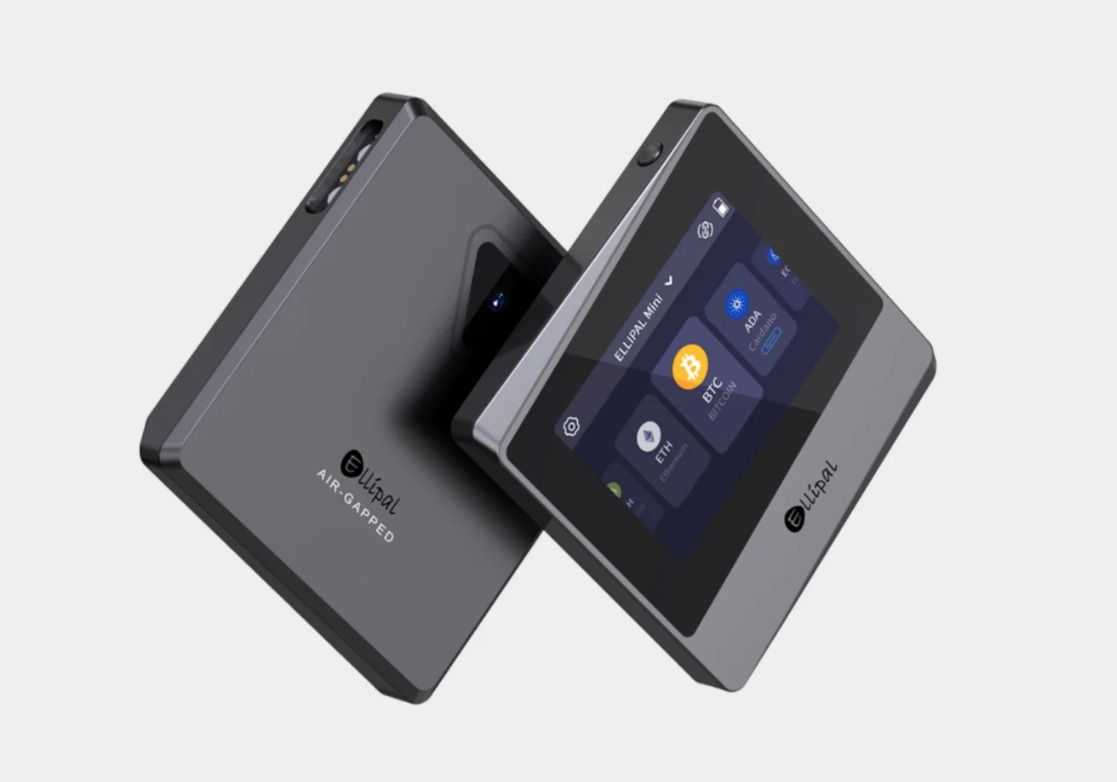
So, if there was nothing "special" about the Mini, why did I like it so much? Simple, because it offered all the same benefits as the original Titan but at half the price! The Mini comes in at just $79, making it pound for pound, one of the best wallets on the market at that price point. The Mini does not skimp on any of the security features or functions that are available in its big brother, either.
I found the Titan Mini felt sturdier than the Titan, with the metal body being more compact and it felt higher quality as well. Plus, as mentioned, I am someone who travels and likes to use my crypto on the go when I can, so I was a fan of the fact that the Mini was much smaller and did not come with the cumbersome charging stand that its predecessor does.
Here are the Titan Mini specs:
- Main Features
Connector: QR Code, Air-gapped
Update: Offline (Micro SD card)
Coin Store memory: Unlimited
ELLIPAL APP: Android & iOS - Dimensions
Size: 75*71*10.5mm
Weight: 120g
Material: Fully metal sealed
Camera: 2.4M AF
LCD: 2.4 inches HD
Battery: 600 mAh
Standby Time: 50 hours
Storage temperature: -20°C to 70°C - Box Contents
Hardware Wallet
Type-C Charging Cord
Security Adapter
Micro SD Card
User Manual
Seed Phrase Recovery Sheets
For the lower price, the better design, and without the need for the charging stand, the Titan Mini is a no-brainer over the original ELLIPAL Titan in my opinion. ELLIPAL released this in-depth comparison piece of the Titan vs Titan Mini if you would like a deeper look.
ELLIPAL Joy
The ELLIPAL Joy is an interesting concept and is ELLIPAL's response to complaints (like the one I made earlier) about how many privacy-minded individuals are concerned about having to trust the private keys that come pre-installed on most hardware wallets.
The Joy is a true offline random number generator, the first of its kind to come to market.
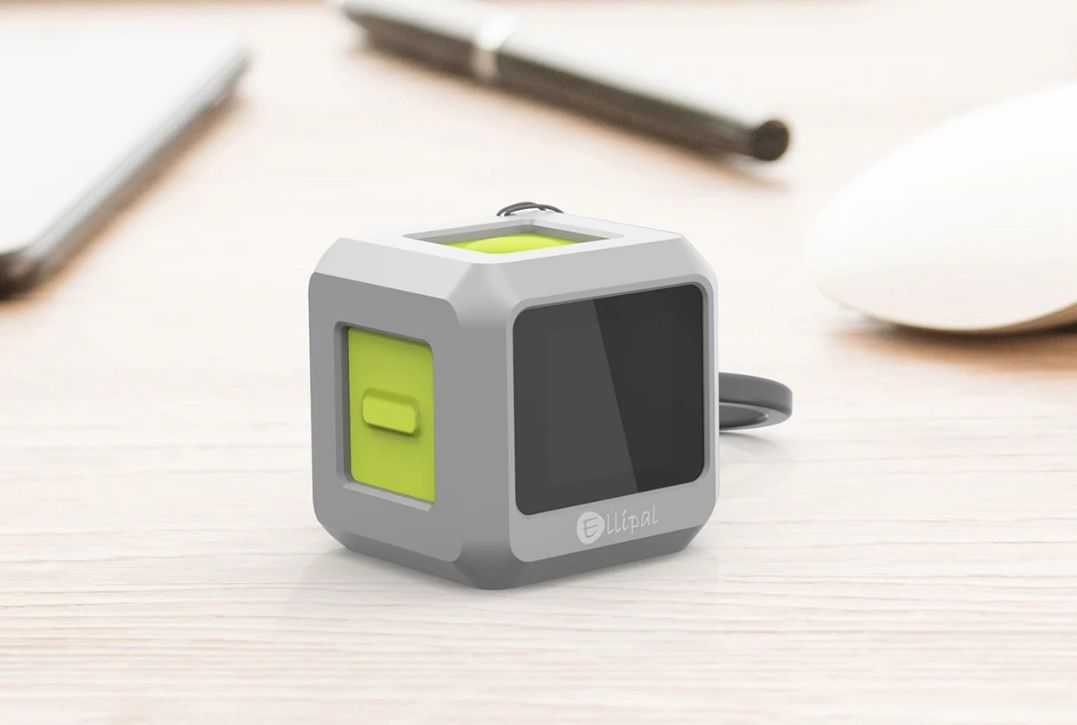
Coming in at just $39, this little device removes the need to trust any hardware or software wallet company. The idea behind this is that when you purchase or download a wallet, it comes pre-configured with a seed phrase/private key. This results in users needing to trust that the company has not kept a database of the private keys and trust that the device was not compromised during transit.
With the Joy, you can create your own private keys offline at the push of a button and simply import those private keys into your wallet, removing any chance of third-party interference with the original private keys that came with the wallet.
Previously, some wallet users would do this manually by creating a random private key using dice, playing cards, or advanced computer users could set their computers to "offline mode" and generate a private key, but this process was time-consuming and quite advanced, so the ELLIPAL Joy makes this process incredibly easy.
ELLIPAL Seed Phrase Steel
If you've never purchased a hardware wallet before or are unaware, most wallet companies will send a piece of paper for users to write their recovery phrases on.

While backing up your recovery phrase is certainly the most important aspect of crypto wallet security (we cover this in great detail in our Crypto Safety article), I think we can all agree that a piece of paper is pretty fragile, perhaps not the most concrete method of backing up our wallets.
That is why many wallet providers like Trezor and Ledger also offer metal backup recovery options. ELLIPAL also offers their version, a way users can back up their phrases with steel and put a lock on the device.
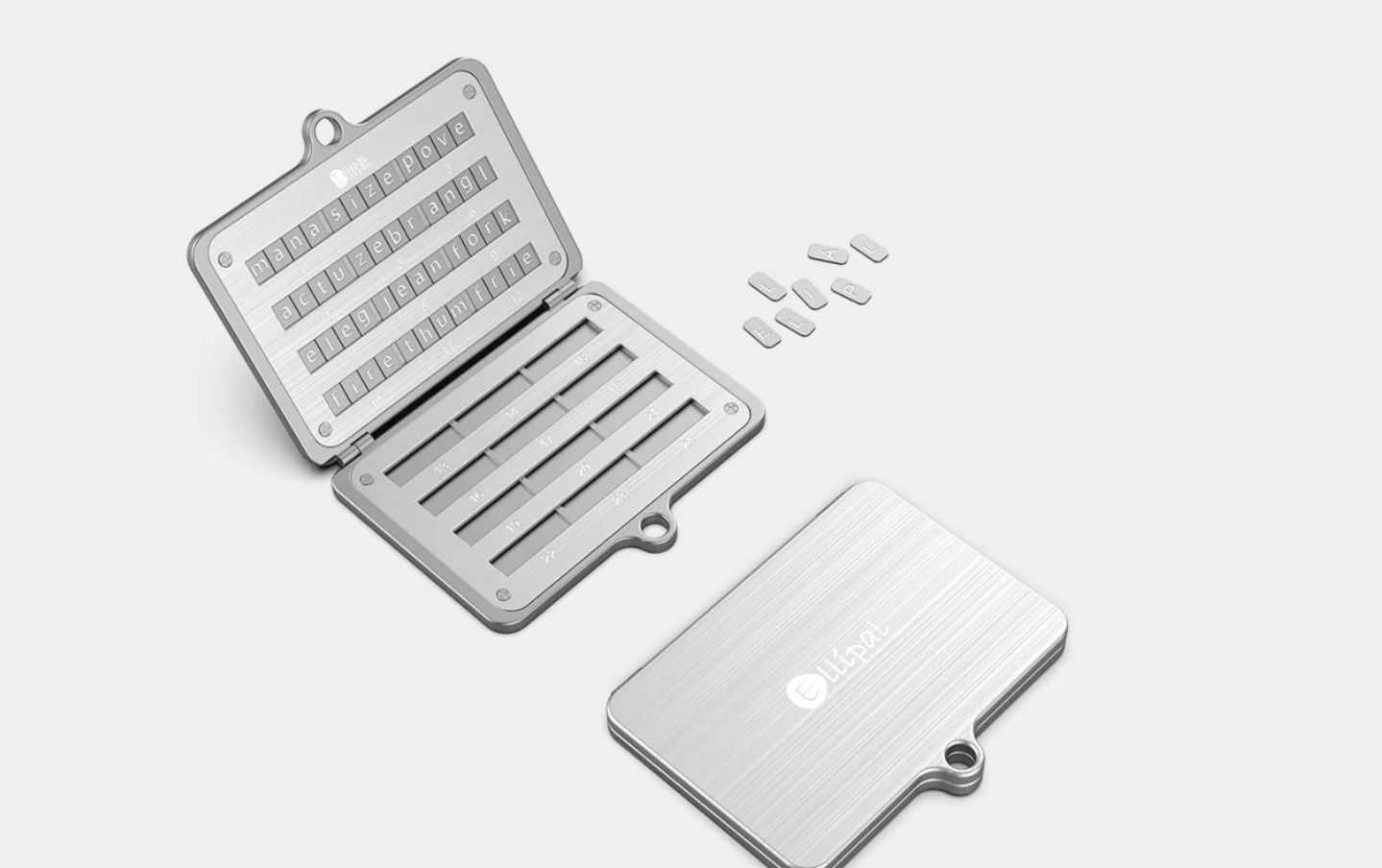
The product is smaller than a credit card and provides a water and fireproof backup storage method. The ELLIPAL Seed Phrase Steel comes in at $59.
Here at the Coin Bureau, we also offer Coin Bureau Branded metal recovery seed devices in our merch store.
ELLIPAL Review: Core Features
Both the Titan and Titan Mini are cold storage wallets, fully air-gapped and made from durable metal with tamper-proof features.
ELLIPAL wallets are renowned for their fantastic asset support of 10,000+ crypto assets, NFT support, and 46+ different blockchains. In addition to asset support, one of the strongest benefits of ELLIPAL over many competing wallets is the plethora of DApps and DeFi accessible from the corresponding mobile application.
Here are some of the ELLIPAL Titan wallet core features at a glance:
- Air-gapped: No USB, Bluetooth, Wi-Fi, NFC, or cellular connection. 100% offline and protected from online attacks.
- Anti-disassembly & Anti-tamper: Fully metal-sealed hardware wallet. Any attempts to disassemble the product will result in damaged and inaccessible inner components.
- Large touch screen: Easily verify and confirm transactions with a large screen that also makes navigation easy.
- Multiple accounts and unlimited storage space: Alternate accounts can be used to manage crypto and a “dummy” account can be set up in you are under duress from physical attackers.
- ELLIPAL security: 2 Factor Authentication PIN entry, password entry.
- Offline firmware update: 100% offline firmware updates using micro SD card, no need for USB ports.
- Purchase and swap crypto: Through third-party integrations, users can buy and swap cryptocurrencies without funds needing to leave the wallet.
NGRAVE ZERO Review: Core Features
The NGRAVE ZERO is also a cold storage, air-gapped hardware wallet that features the highest security certifications in the industry. Like ELLIPAL, the ZERO features a large touchscreen, which is important for transaction accuracy and the device supports NFTs.
We found the ZERO to be more secure and trustless than the likes of ELLIPAL, Trezor or Ledger, but it has a few downsides. Asset support is currently very limited and there is no DApp or DeFi access from directly within the wallet, something that the team is looking to roll out in the future.
Here are some of the core features of the NGRAVE ZERO hardware wallet:
- Air-gapped: The NGRAVE ZERO is fully air-gapped, not relying on any kind of network connection capabilities such as USB, Wi-Fi, Bluetooth, NFC, or cellular. All communication takes place via QR code scanning.
- Anti-tampering: The NGRAVE ZERO is tamper-resistant with an outer casing, inner casing, and PCB.
- Durability: The ZERO is made with military-grade materials. A strong metal body and impact-resistant touch screen make the NGRAVE feel incredibly durable.
- Biometric security: The NGRAVE ZERO’s biometric sensor adds an additional layer of security for authentication and transaction signing. Your fingerprint is used as a variable to create your Perfect Key, unlocks your device, and signs transactions in combination with a solid 8-digit PIN code.
- Trustless Private Key Generation: The private key is created during initial device setup. Private keys are created using a combination of a user’s fingerprint, ambient lighting conditions, and the user can shuffle parts of the key.
- Custom OS: The NGRAVE ZERO’s operating system (OS) was developed from scratch by experienced security experts, removing potential security weaknesses that may be inherent in mobile device operating systems.
- Multiple accounts: The NGRAVE ZERO allows you to store up to 100 accounts.
- Secure backup: The NGRAVE ZERO comes with a two-part GRAPHENE stainless steel Seed backup that provides an offline method to backup the Seed & posthumous continuity.
ELLIPAL vs. NGRAVE: Token Support
Token support is one of ELLIPAL’s strengths and one of NGRAVE’s weaknesses (for now).
Of all the hardware wallets we’ve reviewed, no wallet matches the 10,000+ assets, 46+ native blockchains, and NFT support that ELLIPAL users enjoy. Unlike Ledger, ELLIPAL users do not need to install coin apps either, providing users with limitless storage capacity.
NGRAVE has taken a slower and more methodical approach. With up to 100 accounts, ZERO users can hold Bitcoin (BTC), Bitcoin Cash (BCH), Ethereum (ETH), Dash (DSH), Zcash (ZEC), Litecoin (LTC), Binance Coin (BNB), XRP, Dogecoin (DOGE), Tezos (XTZ), MultiversX (EGLD, previously called Elrond), Groestlcoin (GRS), Solana (SOL), Stellar (XLM), Polygon (MATIC) and Avalanche (AVAX, X-chain). Tokens and NFTs on Ethereum are also supported and most tokens on the ESDT network.
Like other wallets, the NGRAVE team is working on adding more asset support and wallet functionality over time.
ELLIPAL vs. NGRAVE: Security
Security is one aspect where NGRAVE shines above the rest, setting a new standard in hardware wallet security. Its EAL7 certification, the highest in the industry, makes it impervious to known attacks. You can even add extra security with a biometric fingerprint scanner and a PIN. Plus, it generates ultra-secure private keys using a built-in light sensor and human selection input during setup, making it one of the very few hardware wallets on the market offering a trustless private key that cannot be known by the manufacturer or intercepted during transit. The only other wallet we know of that comes without a pre-installed private key is the BC Vault.
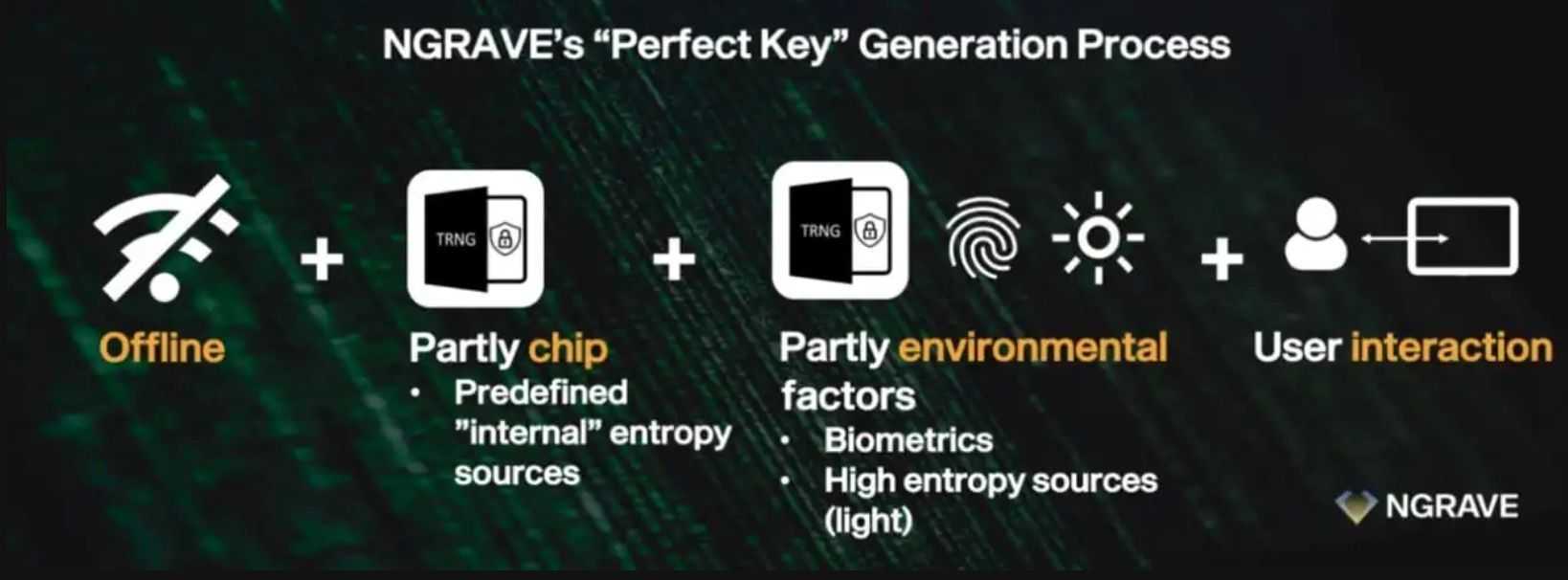
The ZERO holds EAL7, RoHS, and CE certifications, surpassing all other wallets on the market. Firmware updates are USB-C based, isolated from the OS to prevent attacks. If tampered with, the ZERO wipes itself and its keys for maximum protection.
The ELLIPAL came out of the gates with much to be desired when it came to security. The Ledger security team were among the first to test early ELLIPAL devices and found multiple security vulnerabilities. It is unknown if early security vulnerabilities were the result of cost-cutting or if the team was inexperienced when it came to crypto storage, but fortunately, the ELLIPAL team addressed and fixed early vulnerabilities.
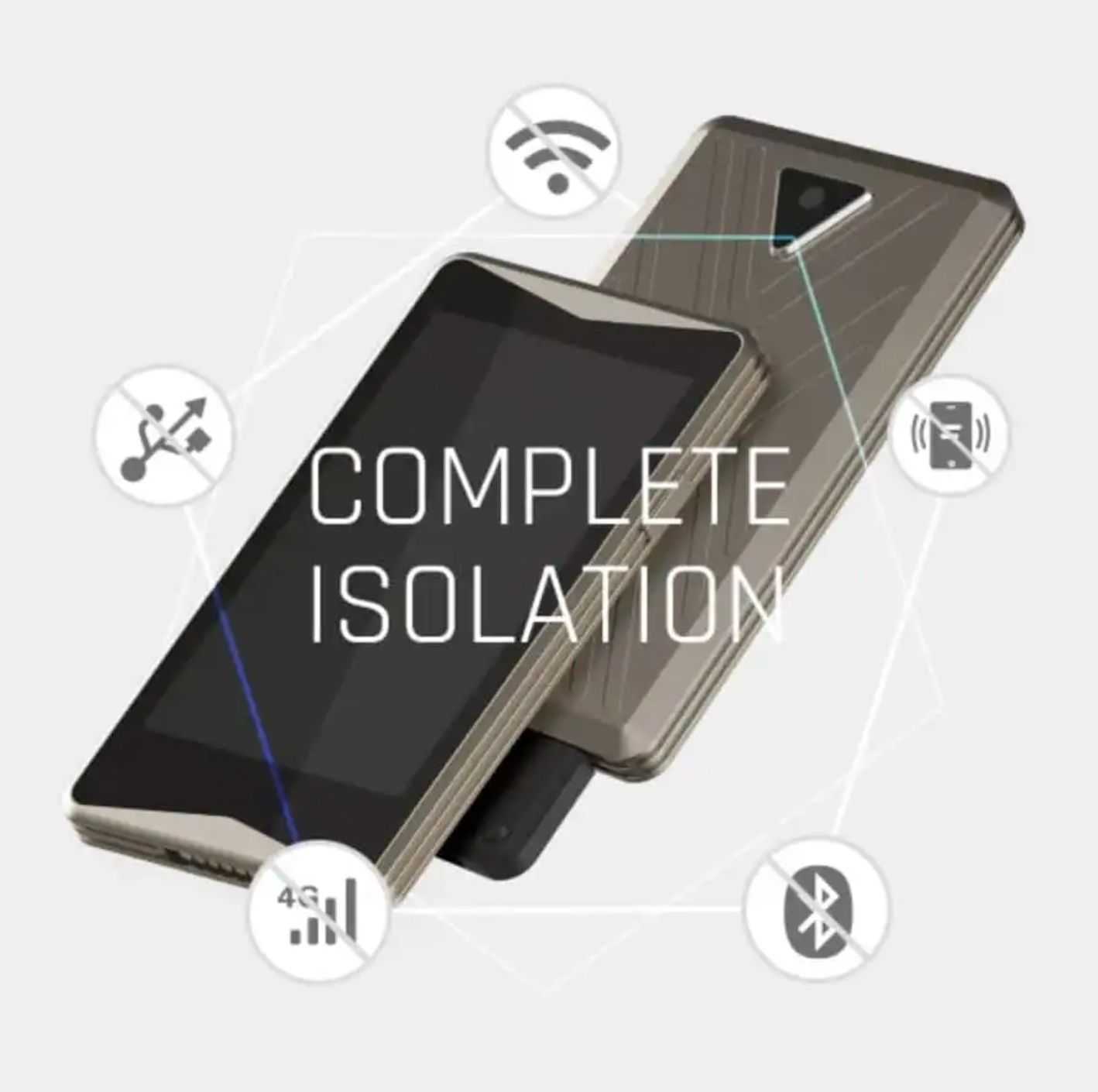
While ELLIPAL devices do not go above and beyond when it comes to security like NGRAVE and BC Vault, they do meet industry standards and best practices, and there have been no known successful remote hacks to date. We like that the Titan is tamper-proof and being fully air-gapped means there are no available remote attack vectors that can be exploited. The Titan is also password and pin-protected and offers traditional recovery phrase features.
ELLIPAL vs. NGRAVE: User Friendliness
Both of these wallets are very user-friendly, but perhaps not beginner-friendly as concepts surrounding self-custody, recovery phrases, and the very nature of hardware wallets are not exactly “natural.” Similar to when mobile phones were first introduced, there is a learning curve involved and it is vital that important concepts such as recovery phrases are well understood.
But as far as hardware wallets go, thanks to the large touch screen, intuitive interface, navigation, and corresponding mobile app that should feel familiar to smartphone users, these wallets can be considered quite user-friendly.
Naturally, as the NGRAVE has fewer features and functions, such as buying/swapping crypto, accessing DApps, staking, and others, the NGRAVE is a little easier to use, but the way ELLIPAL integrated these features into the mobile app also leads to a great user experience.
I do need to give a nod to the Titan here, as it has become my “go-to” wallet for any funds that I wish to deploy to DApps or DeFi protocols as I found the wallet to be the perfect blend between the convenience of a software wallet with the security of a hardware wallet. The fact that there is DApp access available from directly within the ELLIPAL app means you can become a DeFi wizard in no time without messing around with clunky browser extension wallets like MetaMask. I am hopeful that the NGRAVE team will be rolling out similar features soon.
Our Experience When Analysing the NGRAVE and ELLIPAL
I have spent quite a bit of time testing out various wallets and have been using the ELLIPAL Titan, the Titan Mini, and the NGRAVE ZERO now for quite some time.
It was apparent within seconds of opening up the wallets that the ZERO is a premium device, impressively built and is, by a considerable margin, the highest-quality hardware wallet I have encountered. It is also good to note that the premium device certainly comes with a premium price tag and clocks in at a higher price point than the competition, but like most things in life, you get what you pay for.
The device is so robust it feels akin to a bank vault, so I appreciate the military-grade quality as I am always worried when I need to travel with my flimsy Trezor device, and even the metal ELLIPAL doesn’t match up to the durability of the ZERO. I also cannot overstate how much privacy advocates appreciate that the ZERO does not come with a pre-loaded set of private keys, something I worried about with devices like ELLIPAL, Trezor and Ledger before I learned how to create my own private keys offline so I didn’t need to trust the wallet manufacturer. No need to go through that headache with the ZERO.
The ZERO was the first wallet I used that made me feel truly secure and confident that my private keys were not only private, but safe. After hearing about how Trezor devices can be physically hacked and the Ledger team found vulnerabilities with ELLIPAL, I appreciate the impressive lengths NGRAVE went to when it came to the security of the wallet. The intuitive trustless recovery system with the GRAPHENE is also a great innovation in the space.
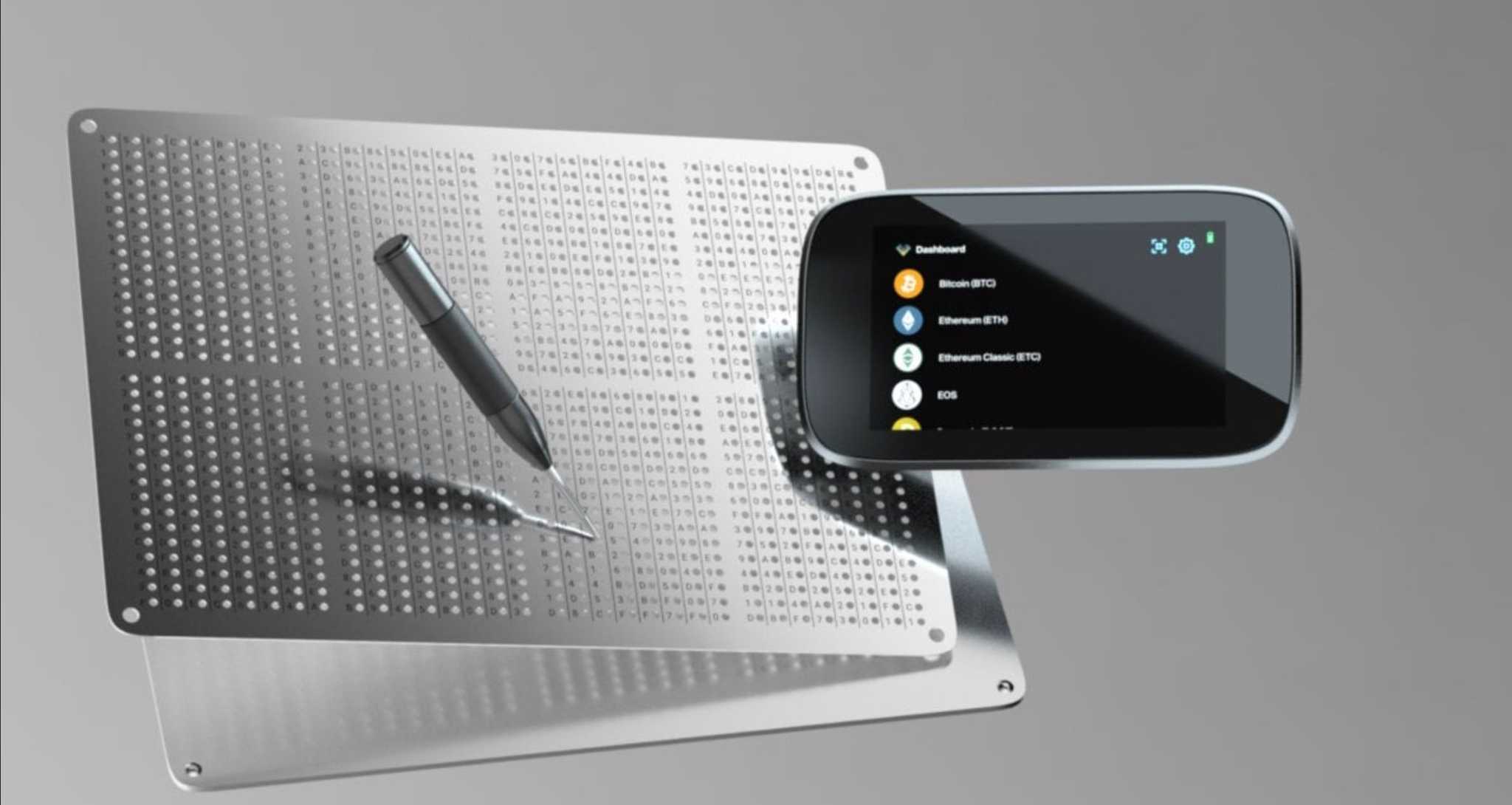
The main letdowns of the ZERO are the lack of asset support and the inability to access DApps and DeFi from the wallet, which are features that the team is planning on rolling out in the future. This shouldn’t be a concern for users who are more interested in long-term storage of assets. Both the app and the wallet are well-designed and the interface is responsive, there are no issues I encountered with the functionality of the wallet.
The Titan was a bit of a mixed bag during initial setup. The touchscreen was inaccurate; I found when trying to set the password that the screen wouldn’t register the letters I was tapping and incorrect keys were being registered as being pressed, so I had to be very slow and deliberate. Then the device froze on the initial bootup, a complaint I saw many users mention online. Fortunately, after resetting the device it seemed to work fine and I used the Titan A LOT without further issues, aside from key pressing feeling like a game of pin the tail on the donkey.
The Titan’s screen resolution is of pretty poor quality, which, I guess isn’t too big of a deal as it isn’t like you are playing games or watching films on the device. On the plus side, The mobile app is well-designed and laid out and I like the fact that I can play around in DeFi and stake crypto without having to leave the wallet.
The Titan is unmatched when it comes to impressive asset and chain support. I make the complaint in my Ledger review that both Ledger and Trezor state that they support “thousands of assets”, which, in my opinion, is a disingenuous statement, as many of the proposed “supported assets” are only supported through third-party integrations. Supporting assets via third-party connection and natively supporting assets ARE NOT the same thing, which is why I appreciate wallets like ELLIPAL and BC Vault that natively (actually) support thousands of assets.
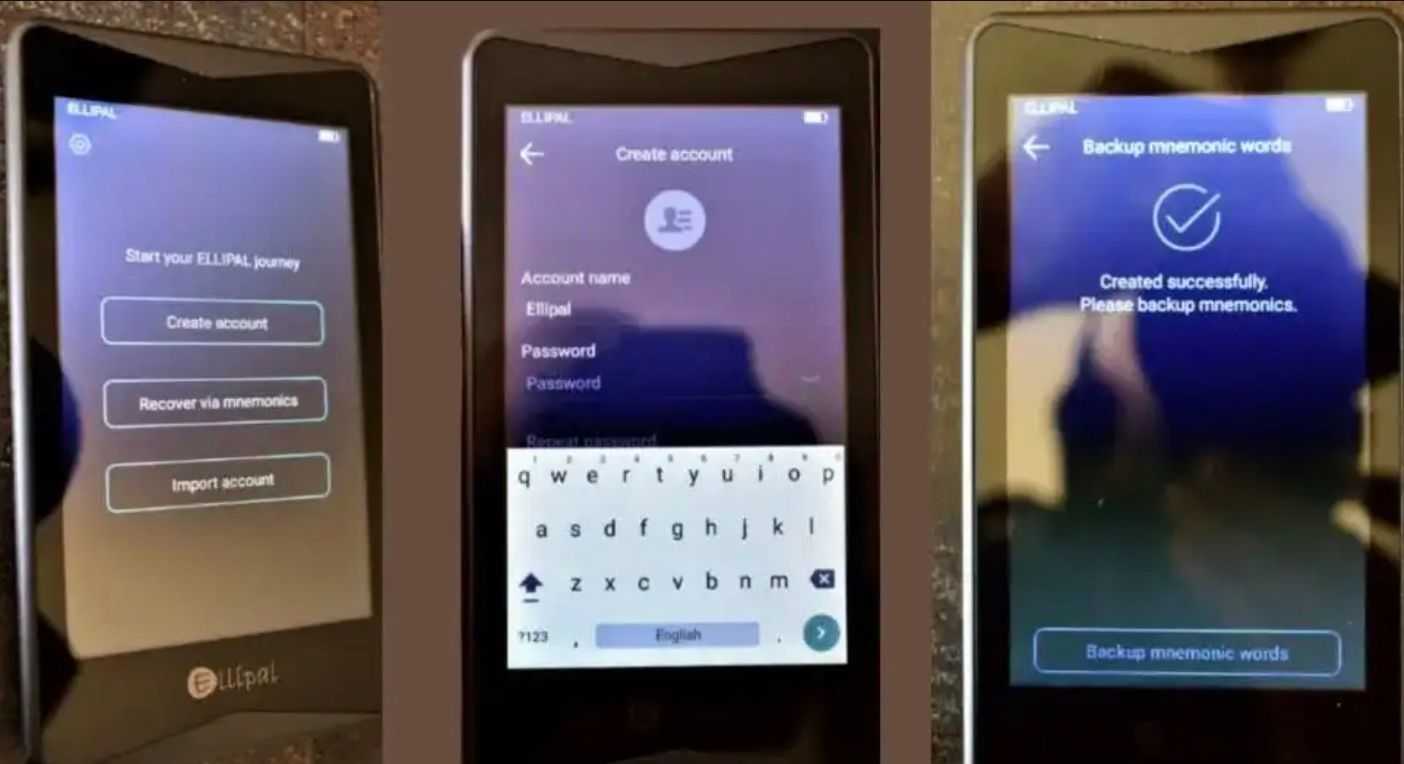
I was decently satisfied with the Titan, it was good, served its purpose, and was great for DApps, staking, and asset support, but in my opinion, the Titan Mini was the real winner.
The Mini felt like it was built with higher-grade materials, the screen is nicer, and it feels like it could survive a solid drop or two. It is also smaller, making it better for crypto use on the go and is roughly half the price of the Titan. So, if you are considering ELLIPAL, I would say definitely go with the Mini. It felt like the superior product in every regard and with a lower price tag.
ELLIPAL vs. NGRAVE: Closing Thoughts
By now, you should have a pretty good idea of which device is right for you. If you are looking for nothing but the highest-quality, most secure storage option, I would recommend the NGRAVE ZERO, or, alternatively, check out BC Vault, as they also offer a unique and innovative advancement in the hardware wallet industry.
If you want a wallet that will allow you to fully immerse yourself in all things Web3, DApps and DeFi, but don’t want to expose yourself to the risks inherent in software wallets, then the ELLIPAL lineup of wallets make a fantastic choice.
Frequently Asked Questions
Both wallets are highly secure as they are both air-gapped and rely on QR code technology for transactions. They are both tamper-proof and feature robust metal casings, but NGRAVE takes security to the next level, achieving higher security certification standards than any other wallet in the industry.
For initial setup, backup and recovery, ELLIPAL is more beginner-friendly, but for actual use we found NGRAVE to be easier. This is simply because NGRAVE had fewer features and bells and whistles, but these two are more or less evenly matched in this regard.
This comes down to personal preference and each wallet has its pros and cons. For things like DApp use, staking, and transacting within the wallet, we find ELLIPAL is the most well-suited for daily crypto use.
For unmatched security and long-term storage, we trust NGRAVE and BC Vault, or Coldcard for users who only hold Bitcoin
Disclaimer: These are the writer’s opinions and should not be considered investment advice. Readers should do their own research.


